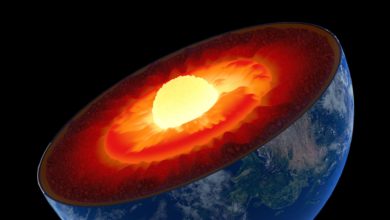‘Monster Black Hole’ Found in Solar System’s ‘Backyard’
Black hole 

 Scientists managed to locate the new black hole thanks to the data supplied by the European Space Agency’s Gaia mission.A massive black hole whose mass is around twelve times that of our Sun has been discovered in relative proximity to our Solar System.Found by a team of astronomers led by the University of Alabama in Huntsville (UAH), the black hole appears to be located much closer to the Sun than other celestial bodies of its kind.“It is closer to the sun than any other known black hole, at a distance of 1,550 light years,” said Dr. Sukanya Chakrabarti, physics professor at the UAH and lead author of the study detailing the black hole’s discovery. “So, it’s practically in our backyard.”The “monster” black hole, as the university’s press release called it, was found after astronomers combed through the data of nearly 200,000 binary stars that was released by the European Space Agency’s Gaia mission, following up on sources with spectrographic measurements from telescopes.“The pull of the black hole on the visible sun-like star can be determined from these spectroscopic measurements, which give us a line-of-sight velocity due to a Doppler shift,” Chakrabarti said.“By analyzing the line-of-sight velocities of the visible star – and this visible star is akin to our own sun – we can infer how massive the black hole companion is, as well as the period of rotation, and how eccentric the orbit is,” she added. “These spectroscopic measurements independently confirmed the Gaia solution that also indicated that this binary system is composed of a visible star that is orbiting a very massive object.”The newly discovered black hole does not seem to interact with luminous stars, with scientists being forced to deduce its presence by gauging the motions of the visible star.“The majority of black holes in binary systems are in X-ray binaries – in other words, they are bright in X-rays due to some interaction with the black hole, often due to the black hole devouring the other star,” Dr. Chakrabarti remarked. “As the stuff from the other star falls down this deep gravitational potential well, we can see X-rays.”
Scientists managed to locate the new black hole thanks to the data supplied by the European Space Agency’s Gaia mission.A massive black hole whose mass is around twelve times that of our Sun has been discovered in relative proximity to our Solar System.Found by a team of astronomers led by the University of Alabama in Huntsville (UAH), the black hole appears to be located much closer to the Sun than other celestial bodies of its kind.“It is closer to the sun than any other known black hole, at a distance of 1,550 light years,” said Dr. Sukanya Chakrabarti, physics professor at the UAH and lead author of the study detailing the black hole’s discovery. “So, it’s practically in our backyard.”The “monster” black hole, as the university’s press release called it, was found after astronomers combed through the data of nearly 200,000 binary stars that was released by the European Space Agency’s Gaia mission, following up on sources with spectrographic measurements from telescopes.“The pull of the black hole on the visible sun-like star can be determined from these spectroscopic measurements, which give us a line-of-sight velocity due to a Doppler shift,” Chakrabarti said.“By analyzing the line-of-sight velocities of the visible star – and this visible star is akin to our own sun – we can infer how massive the black hole companion is, as well as the period of rotation, and how eccentric the orbit is,” she added. “These spectroscopic measurements independently confirmed the Gaia solution that also indicated that this binary system is composed of a visible star that is orbiting a very massive object.”The newly discovered black hole does not seem to interact with luminous stars, with scientists being forced to deduce its presence by gauging the motions of the visible star.“The majority of black holes in binary systems are in X-ray binaries – in other words, they are bright in X-rays due to some interaction with the black hole, often due to the black hole devouring the other star,” Dr. Chakrabarti remarked. “As the stuff from the other star falls down this deep gravitational potential well, we can see X-rays.” Science & TechScientists Uncover Black Hole That’s Releasing Strange ‘Burps’ of Energy18 October, 02:08 GMT“In this case, we’re looking at a monster black hole but it’s on a long-period orbit of 185 days, or about half a year,” she elaborated. “It’s pretty far from the visible star and not making any advances toward it.”According to the press release, the techniques the research team employed to find this black hole should apply to efforts to locate other non-interacting black hole systems.
Science & TechScientists Uncover Black Hole That’s Releasing Strange ‘Burps’ of Energy18 October, 02:08 GMT“In this case, we’re looking at a monster black hole but it’s on a long-period orbit of 185 days, or about half a year,” she elaborated. “It’s pretty far from the visible star and not making any advances toward it.”According to the press release, the techniques the research team employed to find this black hole should apply to efforts to locate other non-interacting black hole systems.


